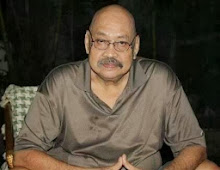THE Bilbao Chess Grand Slam Masters Final 2016 will be held on July 13 to 20, a week earlier than usual to assure the participation of the world’s current best players, especially the world champion , Magnus Carlsen.
The tournament is a double round robin featuring six players. The tournament regulations use the Sofia Chess Rules, which forbids agreed draws before 30 moves, and the “Bilbao” scoring system of 3 points for a win, 1 for a draw and 0 for a loss (though for ratings purposes, the traditional scoring method is used). A soundproofed and air-conditioned glass “cube” was constructed in Bilbao, Spain to house the tournament, allowing spectators to watch closely the players inside.
Aside from Carlsen, Wesley So, Sergey Karjakin, Anish Giri and Hikaru Nakamura have been invited by the organizers. The surprise sixth player is 16-year-old Chinese teenager, Wei Yei, though still far from the most select elite, he is considered by highly renowned chess specialists as the strongest candidate in the near future to dispute and even seize the world title from Magnus Carlsen.
Carlsen, in turn, is planning to become the best chess player in history.
It will be a major accomplishment though by Wei Yei if he does not finish in the cellar.
This tournament is unique because in November this year Carlsen and Karjakin will play for the World Championship in New York. So Bilbao can be considered a prelude to their encounter for the world championship as they will play two times. Thanks to this world exclusive encounter, Bilbao and its Grand Slam Masters Final is one of the top events in this year’s international chess calendar, along with the individual World Championship, the Olympiad in Baku and the Grand Chess Tour.
Wesley is the defending champion in this event and it will be interesting and exciting if he can repeat his performance last year.
Chess Olympiad. According to Fide President Kirsan Ilyumzhinov everything has been ready and the Baku Olympiad can be held right now. Ilyumzhinov said that the competition, which will be held on Sept. 1-14, will make history for the number of participating countries.
“Currently, a record number of applications have been received. I believe that all 178 countries will participate in the Olympiad. So, it will be second biggest competition after the Summer Olympic Games.”
Will Armenia participate? They are considered one of the contenders for the championship.
The Nagorno-Karabakh conflict is an ethnic conflict between the Republic of Armenia and Azerbaijan over the self-declared Nagorno-Karabakh Republic, a region in Azerbaijan populated primarily by ethnic Armenians. The present conflict began in 1988 and escalated into a full-scale war in the early 1990s. Tensions and border skirmishes have continued in the region despite an official cease-fire signed in 1994.
The Philippines has just finished the 2016 Battle of GMs to determine its lineup both for men and women . Rogelio Antonio, Jayson Gonzales and Paolo Bersamina booked their tickets after finishing 1-2-3 in the elimination. They will be joined by the country’s highest rated player, who is presently based in the USA, Julio Catalino Sadorra. Eugene Torre will probably be the fifth player and maybe also the team captain of both men’s and women’s teams.
In the women’s division, Janelle Mae Frayna, Jan Jodilyn Fronda and Christy Lamiel Bernales earned their slots. Among those being considered for the final two berths are Bernadette Galas, Mikee Suede and Catherine Perena-Secopito.
